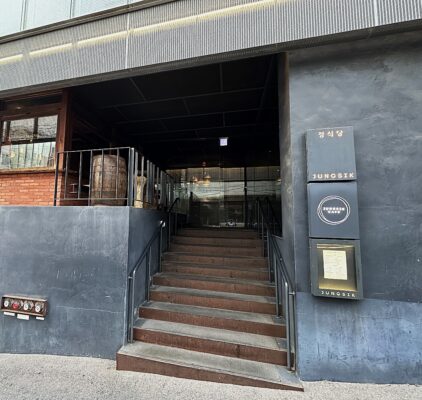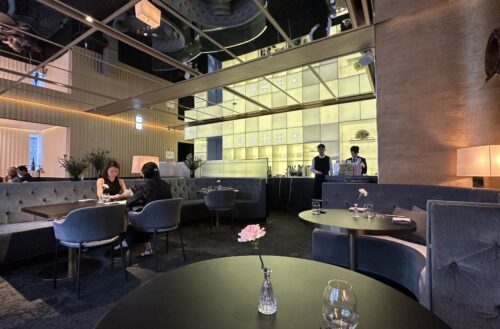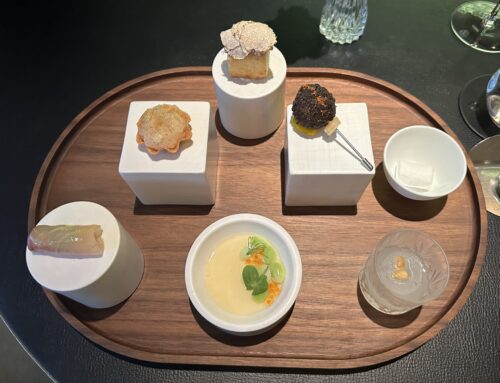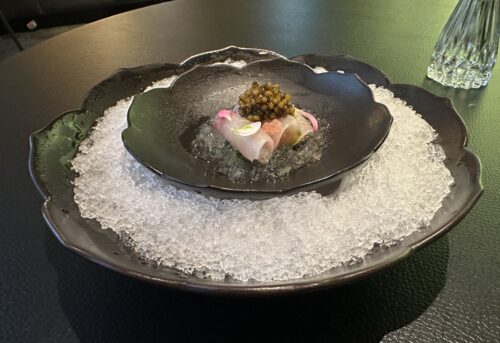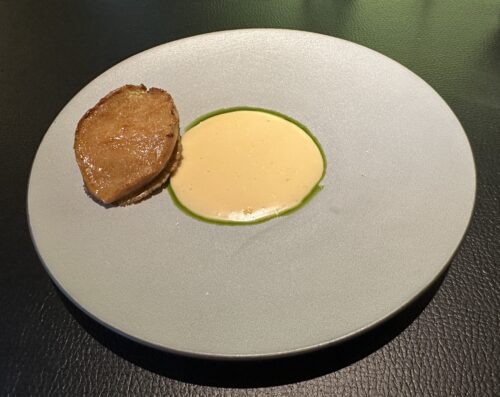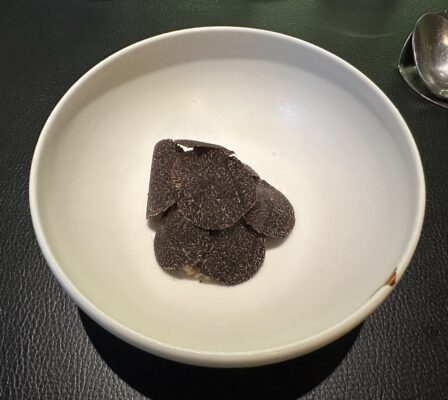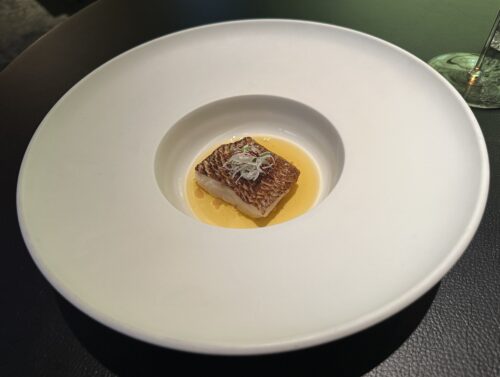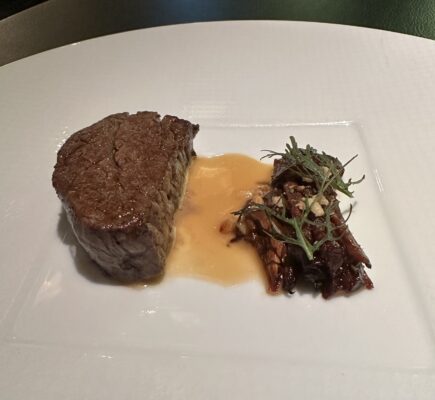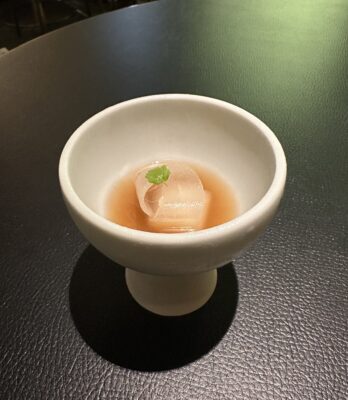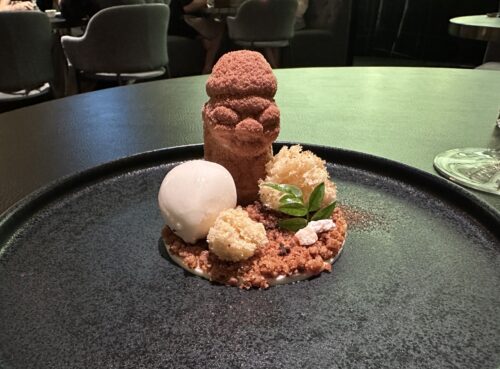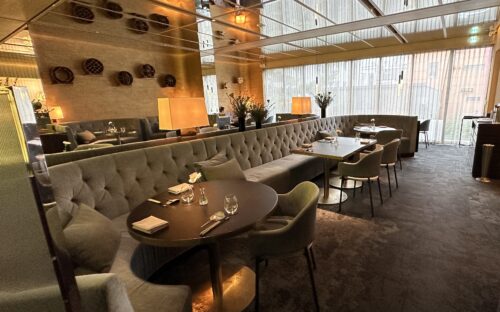
Jungsik
11 Seolleung-ro 158-gil, Gangnam-gu,
Seoul, 06014, South Korea
+82 2-517-4654
Official Site
Traveling food lovers can’t come to Seoul, South Korea without stopping by Jungsik, arguably the country’s most famous restaurant. Chef and owner Jungsik Yim is often called the godfather of “New Korean” cuisine, a modern take on traditional flavors that’s been sweeping the global dining scene, especially in New York City where many Michelin-starred spots now serve this style. After a visit to Mosu, booking a table at Jungsik felt like the natural next step on my dining adventure.
Chef Yim trained at the Culinary Institute of America (CIA) and gained experience at top restaurants like Aquavit and Bouley in New York before heading to Spain to work at Zuberoa and the three-Michelin-starred Akelarre. He opened Jungsik in Seoul in 2009, and its success led to a sister location in Tribeca, New York, which holds two Michelin stars. In Seoul, Jungsik earned its first Michelin star in the 2016 inaugural guide and picked up a second the following year, maintaining both ever since. It’s also consistently ranked on Asia’s 50 Best Restaurants list.
Jungsik is located in the Gangnam district, tucked into the second floor of a multi-story building. Downstairs is Bar Jungsik, a more casual space for drinks and small bites. Upstairs, the dining room opens up with floor-to-ceiling windows, mirrored ceilings, thick carpets, velvet-padded benches, and sleek black tables — a modern and elegant setting without feeling overly stuffy.
There are several menu options at lunch, but dinner is focused on a single multi-course “Signature” menu priced at 280,000 KRW (under $200 USD). Dinner kicked off with the “BANCHAN” usually a variety of Korean side dishes, but here served as an elegant set of canapés. I was guided to eat them left to right: fresh sashimi with a pleasant bitterness, a sweet and zesty scallop tart, a beef tartare toast with black truffle that was outstanding, and a fun kimchi-cheese lollipop in squid ink. There was also a delicate soy custard topped with salty roe, beautifully fresh vegetables, and a fermented rice drink packed with flavor. It was a memorable way to set the tone for the meal.
Signature Menu:
The first course was CAVIAR, which consisted of cured jackfish topped with caviar. The fish was thinly sliced, clean, and fresh, while the vinaigrette with Korean herbs gave it a nice floral and acidic touch. The tomato jelly underneath brought out the umami, and the caviar added a luxurious salty finish.
Next was ABALONE, sourced from the waters of southern Korea, steamed perfectly for a smooth texture. It came with a lightly spicy kimchi-flavored sauce and a buttery wine reduction with hints of citrus — rich but not heavy. The SWEET SHRIMP GIMBAP a Korean classic reimagined into a crispy seaweed cylinder filled with rice, fried shrimp, and kimchi. I was instructed to dip it into shrimp powder for an extra punch of flavor. Alongside, there was a piece of soy-marinated shrimp, a great showcase of the main ingredient.
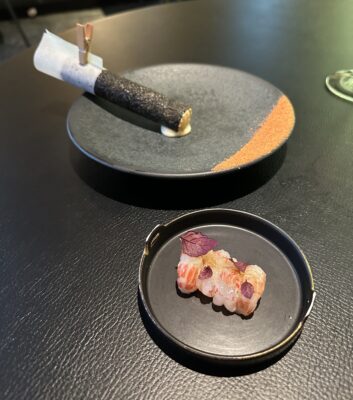
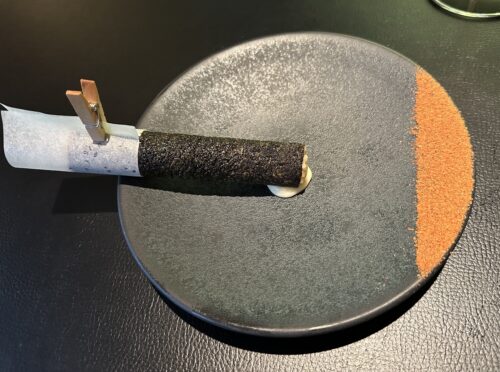
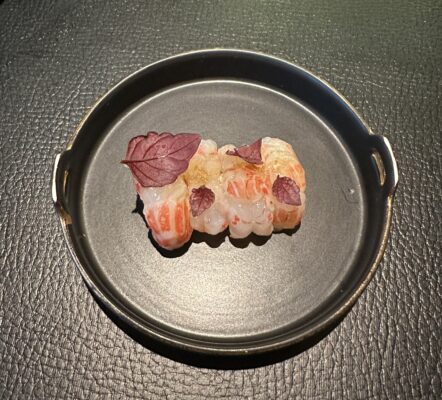
Then came the ROYAL BIBIMBAP. While bibimbap is a simple Korean rice dish, this version was elevated with black truffle, beef tenderloin, foie gras, and cheese, bringing together earthy and savory elements in a luxurious way. The next dish was GEUM TAE, or red snapper. It reminded me of a similar one I had at Mosu the night before. The fish was firm but tender, with perfectly crisped skin. A light oil-based sauce added a subtle nuttiness, and it sat on kimchi infused with yuzu and soy sauce, giving the dish a bright, citrusy heat.
For the main course, there was a choice between LAMB and HANWOO beef (a +30,000 KRW supplement). I went with the HANWOO. It was a tenderloin cut, cooked medium rare—incredibly tender, juicy, and full of flavor. The brown butter and soy sauce added a nice mix of sweetness and a touch of salt. On the side, there were grilled mushrooms, roasted pine nuts, and herbs that paired really well with the beef.
The KOREAN MELON KOMBUCHA arrived chilled and acted as a refreshing palate cleanser. It had a bright tanginess and a subtle sweetness that was light and cooling. The main dessert was the DOLHAREUBANG l CARROT, a playful take on Jeju Island’s iconic volcanic statue. This mini figure was made of chocolate mousse and filled with peanut caramel. Rich and sweet, it was balanced nicely by a scoop of milk ice cream that toned things down with its gentle sweetness. Fun and satisfying.
WATERMELON STICK followed, a sorbet with that unmistakable watermelon flavor. Cool, crisp, and just sweet enough. To wrap up the meal, coffee was served with a house-made CHOCOPIE, a nostalgic Korean treat of chocolate and marshmallow. The sugary richness paired well with the bold black coffee.
After a long series of courses, this dinner definitely stood out. The flavors were rooted in Korean tradition, but the execution was thoughtful and modern. The kitchen leans heavily on high-quality local ingredients, blending them seamlessly with Western techniques. Some dishes reinterpreted classic Korean staples, while others incorporated luxurious Western ingredients to elevate the experience.
I went with the wine pairing at 168,000 KRW (they also offer a 9-glass version for 230,000 KRW). The selection was diverse—Korean spirits, Japanese sake, and wines from around the world—each thoughtfully matched to the dish it accompanied.
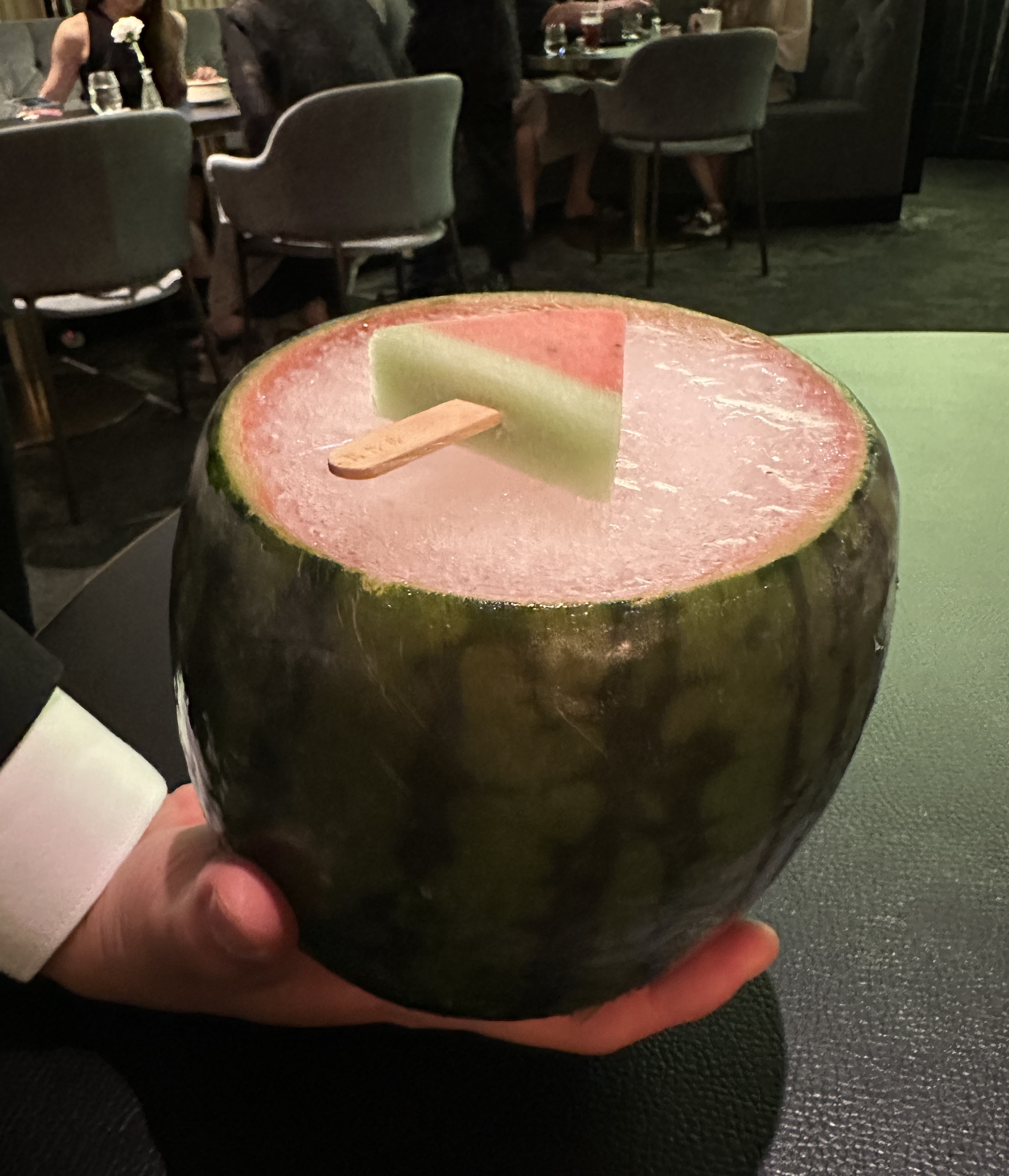
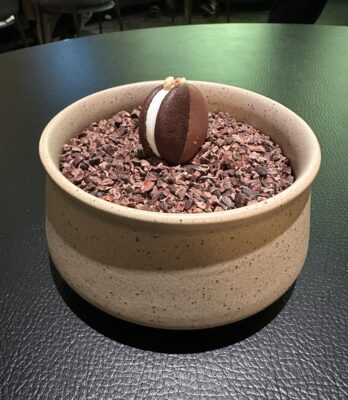
Service at Jungsik was formal but never stiff. The staff was professional, well-spoken, and always happy to engage. Every server who came by the table knew the menu well and explained each course clearly. There was no language barrier, and they were attentive without ever hovering—glasses were refilled before you even thought to ask.
Beverage Pairing:
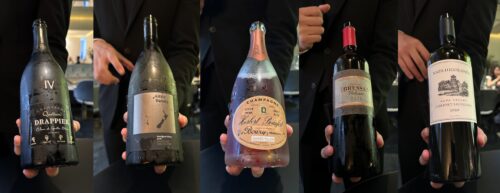
Jungsik feels surprisingly approachable. If you’re curious about experiencing a two-Michelin-star meal without spending a fortune, lunch is a great way in. But even dinner is doable at just under $350 USD for the full menu with drink pairing, it’s a fair price for a restaurant of this caliber.
Back in New York, it’s hard to miss the wave of “Modern Korean” spots popping up everywhere. Korean food has gone far beyond its K-Town roots in Manhattan or Flushing in Queens. Jungsik played a huge role in that shift. Chef Jungsik Yim and his flagship in Seoul helped define what “New Korean” could be. So if you’re in Seoul, there’s no better place to explore where it all began.

